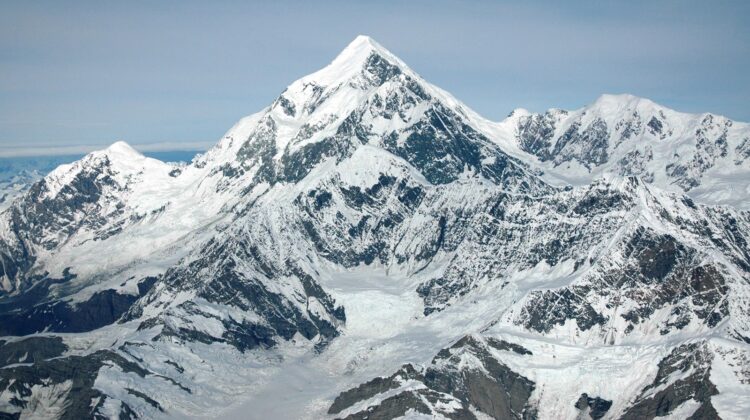
Straddling the border between Alaska and Yukon Territory, Canada, Mount Saint Elias cuts an imposing figure against the vast Alaskan sky. At a staggering 18,008 feet (5,489 meters), it reigns as the second-highest peak in both countries and the fourth highest in North America. But Mount Saint Elias is more than just a number on a map; it’s a behemoth sculpted by ancient geological forces, a sacred site for indigenous people, and a formidable challenge for intrepid climbers.
A Mountain Steeped in History
The first Europeans to lay eyes on Mount Saint Elias were likely members of Vitus Bering’s expedition in 1741. The Danish explorer, in Russian service, sighted the peak during his voyage to explore the Alaskan coastline. While some believe Bering himself named the mountain after Saint Elias, whose feast day fell near the sighting, others posit that mapmakers bestowed the name later, referencing a nearby cape named after the saint.
Long before European arrival, the Tlingit people, who have inhabited the region for millennia, revered Mount Saint Elias as Was’eitushaa, meaning “mountain at the head of Icy Bay” or “mountain inland of Was’ei” (referencing Icy Bay). It features prominently in their oral histories and is considered a sacred site.
The mountain remained unclimbed until 1897 when an Italian expedition led by Prince Luigi Amedeo, Duke of the Abruzzi, achieved the first successful ascent. Abruzzi, a renowned mountaineer, meticulously planned the climb, establishing a series of camps and employing groundbreaking techniques for the time. Their success paved the way for future expeditions, but Mount Saint Elias continues to be a formidable challenge, with its unpredictable weather, treacherous glacial terrain, and immense scale.
A Realm of Glaciers and Granite
Mount Saint Elias is part of the Saint Elias Mountains, a vast range stretching across Alaska, Yukon, and a sliver of northern British Columbia. These mountains are a product of plate tectonics, formed by the subduction of the Yakutat Microplate beneath the North American Plate. This ongoing process has resulted in a range known for its dramatic relief and soaring peaks.
Its colossal form is sculpted by glaciers, immense rivers of ice carving valleys and leaving behind breathtaking icefalls. The Southeast Spur, the standard climbing route, is a testament to this glacial sculpting. This immense ridge, rising over 10,000 feet from its base, is a daunting yet visually stunning feature.
A Climber’s Everest, Alaskan Style
Mount Saint Elias is often referred to as the “Alaska’s Denali,” a comparison that highlights both its stature and its unique challenges. While Denali, North America’s highest peak, boasts a higher elevation, Mount Saint Elias presents a different set of hurdles. Its proximity to the ocean creates a notoriously unpredictable weather system, with frequent storms and high winds. The immense vertical rise from tidewater, with the entire 18,000 feet of elevation gain concentrated in a relatively short horizontal distance, makes for a physically demanding climb.
Unlike Denali, with its established basecamps and ranger support, reaching Mount Saint Elias requires bush plane access or arduous multi-day hikes. Climbers must be self-sufficient, carrying all their supplies and relying on their own skills and experience to navigate the unforgiving terrain.
A Land of Untamed Beauty
Despite the challenges, Mount Saint Elias beckons experienced mountaineers with its pristine beauty and sense of adventure. The reward for a successful climb is a breathtaking panorama encompassing glaciers, snow-capped peaks, and the vast expanse of the Alaskan wilderness. The feeling of standing atop this majestic peak, surrounded by a seemingly endless panorama, is an experience that lingers long after the descent exclamation
Do you know: If you are mountain lover then you can explore mountains like Everest expedition (Everest Nepal/ Everest Tibet), Lobuche Peak climb, Island Peak climb, Aconcagua expedition, Elbrus expedition, Manaslu expedition, Ama Dablam expedition, K2 expedition.
Beyond the Climb: A Protected Landscape
Mount Saint Elias lies within two protected areas: Wrangell-St Elias National Park and Preserve in Alaska and Kluane National Park and Reserve in Canada. These vast parks encompass not just the mountain itself but a spectacular wilderness landscape teeming with glaciers, alpine meadows, and diverse wildlife. Grizzlies, Dall sheep, mountain goats, and a variety of bird species call this region.
The parks offer a range of activities for visitors beyond mountaineering. Hiking trails traverse valleys and meadows, offering stunning views of the mountains Visitors can kayak on glacial lakes, explore ice caves, or simply experience the serenity of this untouched wilderness.

Leave a Reply